The School will be closed from December 22nd to January 6th. Stay tuned, you’ll have the chance to relive the best moments of 2018 on our Facebook page. Enjoy the Winter Holidays and see you on January 7th.


The School will be closed from December 22nd to January 6th. Stay tuned, you’ll have the chance to relive the best moments of 2018 on our Facebook page. Enjoy the Winter Holidays and see you on January 7th.
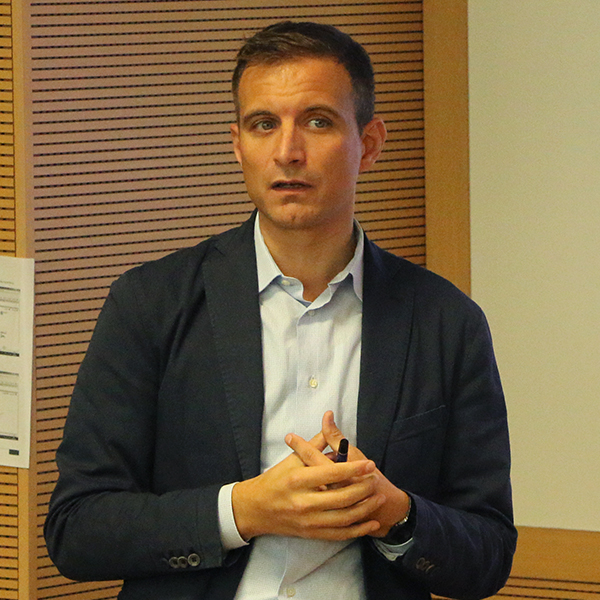
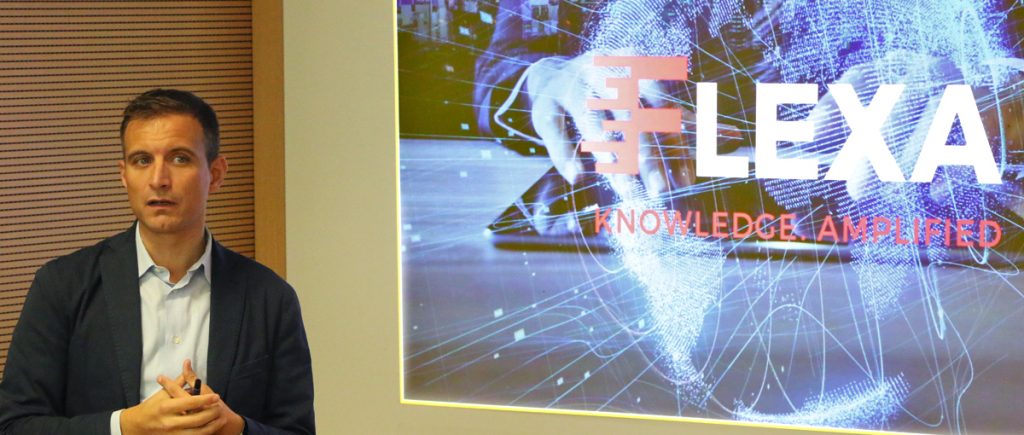
Every week I interview entrepreneurs and experts from around the world to share their big idea about new forms of value creation and the potential we can unlock when technology augments the unique strengths of people to deliver remarkable impact.
Transforming from Graduation to Employability
I got inspired by the big idea behind FLEXA: hence I invited Professor of Strategic Management and Innovation, Federico Frattini to my podcast. We explore the changes in the market place, and how this is putting more and more pressure on the education system and the students they serve. The goal should not be just to successfully graduate, but to actually be employable after you graduate. This changes the requirement 180 degrees on how students, employers and university’s communicate and collaborate together.
The thing that triggered me most from my interview with Federico
“The basic idea is to give our students exactly the knowledge they need to achieve their career goals faster and to make them more employable.”
Why did this trigger me? What’s the bigger value here?
It’s again a very strong example what happens when we start innovation with outcome in mind, rather than output. It might seem obvious, but it’s a 180 degree turn in how ‘the business’ of Education works. By applying intelligent technologies to the learning process any university can make the shift from delivering graduated students to students that can actually directly start to make an impact and be self-sustainable in society.
Beyond that linking effort to tangible results will, from my perspective, add more meaning, and as such lower the number of drop outs, and help students to accelerate their education process, which is a win-win for everybody.
The concept is more widely applicable though. It reminds me of my podcast with Tom Pennings, CEO of Onsophic, who’s solution ties corporate learning to business outcomes and performance management. FLEXA however, addresses the challenges at the very start of the process – the student – and with that creates a positive ripple effect that impacts everyone.
What’s the more significant question/opportunity that raises?
The example above is just the first step in accelerating a large-scale transformation in Education. Matching curriculum with aspirations is one side of the coin. Imagine what happens when employers start to engage in the process? That way you have the perfect platform to match demand and supply – and as such critical information to perfectly tune curriculum development. It’s turning curriculum process from top-down (education system led) to bottom-up (market led).
If you know what employers really search for, and what knowledge students need to achieve career targets, it means that for the first time the education system can start to anticipate and follow the shifting demands in the real business world, resulting in new ways to close the rapidly growing skills gap as well s the gap between students and placement.
Taking that one step further – as Federico rightly quoted: “potentially this service can be offered without any degree, to strengthen the digital heart and soft skills of any person in the planet, whether they are students or not of our school, I think that this gives you an idea of potential societal impact.”
To help accelerate this development, just think about how your companies’ HR, recruiters, headhunters or other players in the HR industry could benefit from this platform. Share your views here.
Listen to the big idea behind FLEXA, and why it has the potential to transform the way Education works and creates impact.

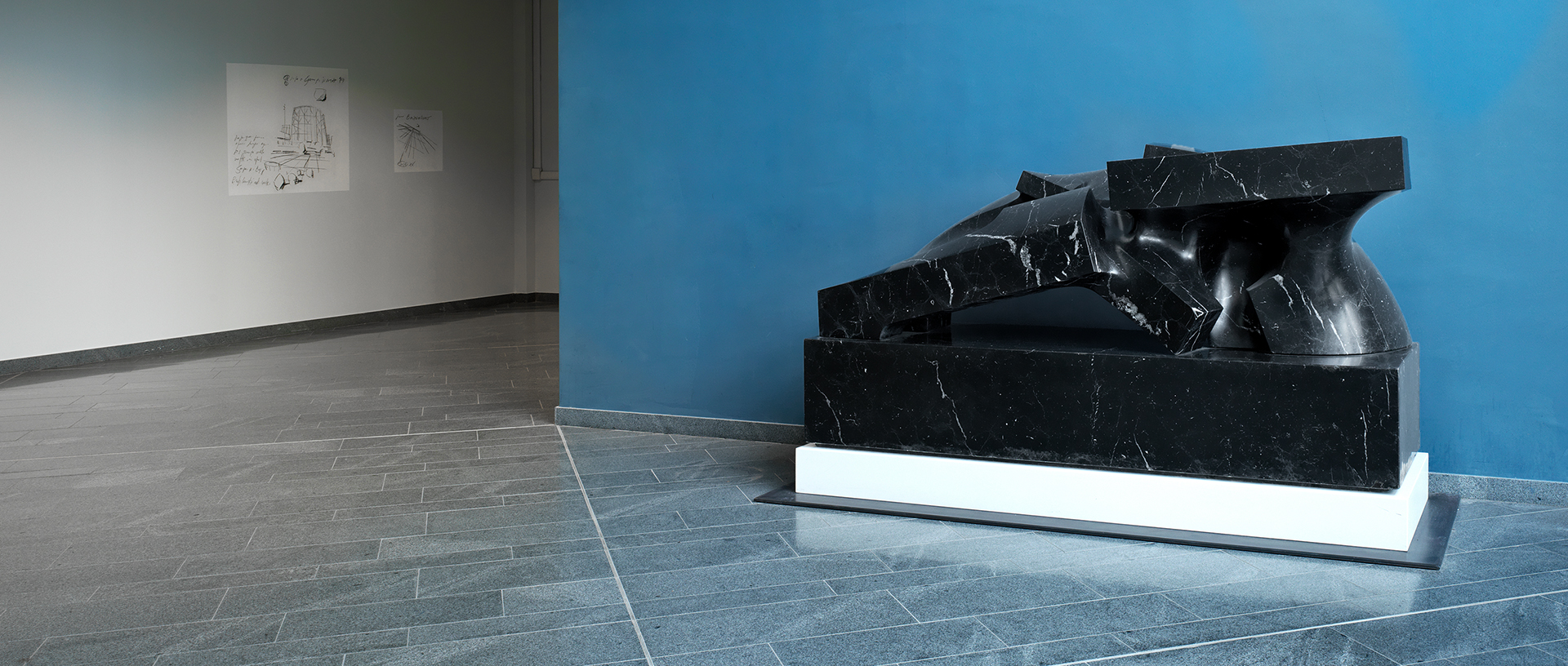
At a ceremony held at the headquarters of the European Parliament in Brussels, the Politecnico di Milano received the “Art Patrons of the XXI Century” award, “for transforming the campus in an open-air museum with permanent and temporary exhibitions”.
Vice Rector, Prof. Emilio Faroldi, collected the award. The “Art Patrons of the XXI Century” award aims to strengthen the visibility, recognition and reputation of institutions, companies and private investors who actively contribute to the development of the arts and society.
Now in its third year, the award has attracted entries from over 300 companies and institutions from 32 countries across 5 continents. Amongst this year’s winners in the Institutions category, besides our University, there are the Italian Ministry of Foreign Affairs, FAO, the World Bank, Banca d’Italia and the European Joint Research Centre. Created in 2016 by pptArt, in collaboration with the LUISS Business School, the programme developed from the realisation that companies that are actively involved in the arts world tend to have greater financial success and seem to be more able to tackle many ethical, environmental and social challenges.
The artistic project that won this prestigious prize is The external dimension of sculpture, a permanent exhibition by Gio’ Pomodoro at the Bovisa Campus. 22 works by the great Italian sculptor chase each other through a post-industrial landscape, inserting themselves among the austere geometries of our university buildings. The result is a joyful unity of marble, bronze and architectural elements.
From the end of the 60s, Giò Pomodoro believed in the external dimension of sculpture, its relationship with the environment and the people who use it, and he made it a place for people to meet and relax. He thought that the specific language of sculpture was extremely close to that of architecture and science, and that it was imperative to reinstate their original unity.
Therefore, his work is characterised by involving the environment through an interaction that moves from the sculpture and activates the external space.
We believe that Giò Pomodoro effectively represents polytechnic culture. A sculptor and a graduate in surveying, he studied poetry and science, and considered architecture a sister discipline. He made jewellery and medals, ceramics and furniture; he designed and painted; he worked with iron and polyester, bronze and plaster, stone and marble. We do not want it to be like this. Thanks to the essential collaboration with the Giò Pomodoro Archive, we are proud to host this open-air museum to promote his works as much as possible and make them available to our students and the city of Milan


Do you have a brilliant business idea? Are you thinking of launching your own startup? If so, then keep reading and enjoy the tips Antonio Ghezzi, Professor of Strategy & Startups, has shared with us!
Startups and entrepreneurship are hot topics. Thus, when we heard of the latest article by Prof. Ghezzi – “Agile Business Model Innovation in Digital Entrepreneurship: Lean Startup Approaches” – we jumped at the opportunity to ask him for an interview.
Expressions like “agile business model” or “lean startup” may intimidate you, but Prof. Ghezzi’s explanation will make everything clearer.
In the aftermath of WWII, companies needed to make the production process leaner and to cut waste. The answer was the “Toyota System”, the prelude to modern lean manufacturing.
Later, authors like Steve Blank and Eric Ries introduced the same “waste-reducing” idea to startups. They theorised that startups – traditionally short of money – could not afford to spend resources on something clients did not require.
Henry Ford used to say, “If I had asked people what they wanted, they would have said faster horses.”
Actually, the lean approach does not totally transfer the innovation process to customers: it is still up to the entrepreneur to conceive brilliant ideas.
Yet, entrepreneurs often make a mistake. They see customers – those the product is made for – as “enemies”, since they are the final judges of the product’s success, and they may even reject it. Thus, in the attempt to make the product “perfect”, they invest a large amount of money upfront and delay the launch on the market. But there is an inner fallacy in this notion of perfection: through heavy investments, the product or service will become perfect only from the entrepreneur’s perspective, but not necessarily from the customer’s.
The lean approach tries to reverse the situation, inviting entrepreneurs to ask for customers’ opinions as soon as possible, in order not to waste resources on something the public may dislike.
The lean approach suggests that the business model – i.e. how the company creates value, delivers it and captures it – is validated by the market at each step. Traditionally, startups are very good at creating value, but they have problems in monetising it. The lean startup approach helps entrepreneurs to overcome this difficulty.
Entrepreneurs have to translate their business idea into a series of falsifiable assumptions, about the services they want to sell, to whom, about marketing decisions, partnerships, etc.
Then they have to test them. How? By designing a Minimum Viable Product. Through the MVP – a basic sample of the product – entrepreneurs can collect customers’ feedback without investing too much money.
Dropbox’s MVP, for example, was a video. There was no code at all! It simply showed how to create folders and how to share them… It was played hundreds of thousands of times and it made the beta waiting list jump from a few thousands of “tech nerds” to over 75,000 people overnight.
This is the difference between the lean startup approach and marketing research: the first is about what people do, the latter about what people say.
Another great example is Zappos, the online retailer. A few years ago, Nick Swinmurn – Zappos’ founder – thought of selling shoes online. However, would people buy them? At that time, the answer to this question was not all that predictable and testing was needed.
He therefore tried to replicate customers’ natural behaviour through a “fake” e-commerce website. It showed pictures and prices of shoes, inviting customers to buy them online. When people hit the “buy” button, nothing happened.
Nonetheless, this helped Zappos’ founder to collect important data: out of all the traffic generated on site, a given percentage of customers tried to buy shoes on his website. He got a metric – the conversion rate – that he could use to make real-world forecasts.
Testing is very important because it helps entrepreneurs to understand whether they have found the Product/Market Fit – a product meeting the needs of the market. Otherwise, it would be better to make the idea perish as a whole or slightly change it in order to meet customers’ feedback. This shift – called “Pivoting “– happens all the time.
Thanks to the lean startup approach, entrepreneurs can reduce the amount of time and money spent in validating a business model and speed up the achievement of the Product/Market Fit.
This process works well in the digital context as it’s easier to create MVPs for digital products. Still, it can also be applied in others sectors, provided that minimum is not that minimum and you’re eager to raise the bar. In the end, it can be considered a cross-industry approach that even large companies or institutions are adopting within a strategic renewal and corporate entrepreneurship framework. Just consider that, in the US, it is even applied to the Defence Sector!
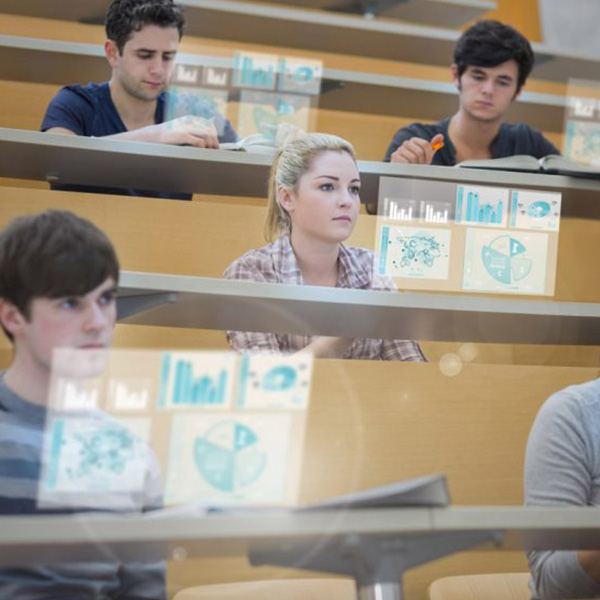
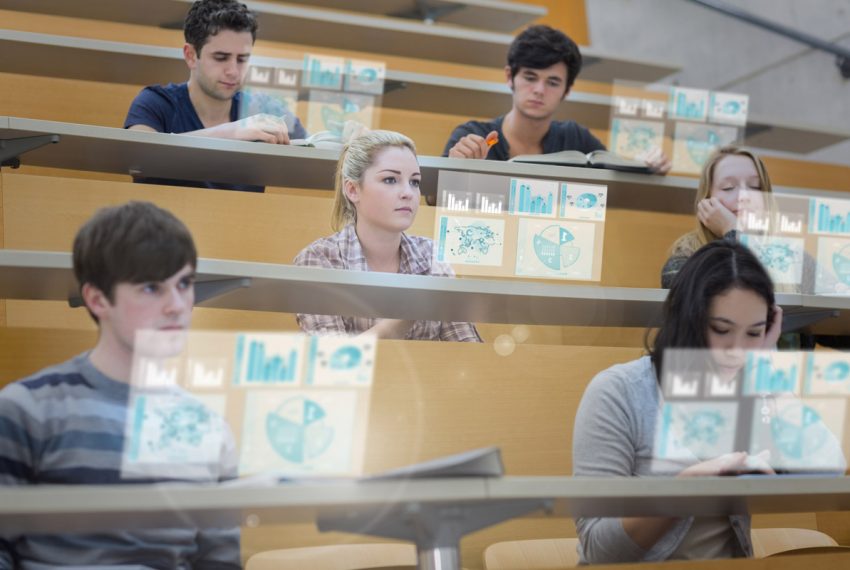
Education technology – or the use of information and communications technology to facilitate, enrich and in some cases replace traditional forms of learning – is a hot topic with educators and investors alike.
As massive open online courses (MOOC) continue to sprout up, in many cases attracting students who may not otherwise have the possibility to study, educators also debate the extent technology can be used to improve the learning experience and the best way to do that in the traditional classroom setting.
Investors have also targeted so-called edtech, or edutech, opportunities. According to data from the Hack Education site, which tracks developments in the sector, a total of $3.48 billion was invested around the world last year in edtech while the business also saw four mergers, four IPOs and 86 acquisitions. Metaari, a Seattle-based research firm, placed the value of global “learning technology” investments last year at a whopping $9.5 billion, although its definition of just what falls into the edtech basket is far broader than most of its peers.
While people may disagree on just what edtech is and thus, the extent of the edtech investment boom, there appears to be more agreement on where the funds are going. Topping the list is the United States, while investments in China and India are rising dramatically as investors seek to tap into the vast user bases in both countries and an appetite for new investments in education. While edtech progress in Europe, underpinned by the UK and Scandinavian countries, has been generally slower, there are a growing number of initiatives throughout the Old Continent. In edtech hotspots around the world, schools are increasingly playing a direct role in shaping educational platforms from elementary to university level.
And while there may be much talk of edtech today, it’s hardly a new phenomenon. MIT professor Seymour Papert talked about the benefits of edtech half a century ago. “With computers, there is a substantially bigger chance that you can lead the child with less effort into something he really likes doing,” Papert said in a 1970 interview with Computer Decision. “The intersection with the set of fun things with the set of educational things is sufficiently big so that you should be able to keep every student internally motivated.”
To be sure, technology and edtech have both advanced by leaps and bounds over the decades – go back to the ‘80s and edtech largely meant bulky personal computers, floppy discs and rudimentary programmes – although helping to keep students motivated is still one of the major aims of edtech today.
As edtech proponents look to the use of cutting-edge technologies like virtual reality, artificial intelligence (AI) is already carving out an important role in the edtech space, a trend that is expected to continue in the future. Its most common use today is in personalised learning programmes, with data collected on the individual allowing for a customised approach based on factors such as the speed of a student’s learning, method of study, goals and personal interests. Along with this comes personalised feedback, allowing for adjustments when learning is not progressing as planned.
Among those that have invested heavily in personalised learning is the Bill and Melinda Gates Foundation, which cites the potential for a massive reduction in dropout rates. Edtech also offers an upside to star students, who may progress at a faster pace. High-profile initiatives also include the new FLEXA digital platform created by Microsoft and MIP – the Graduate School of Business of Politecnico di Milano – which provides students and other users with tailor-made digital contents to improve the learning process and help close the gap between their expertise and desired career goals. This is done while enabling collaborative learning and skill building with other platform users and facilitating connections with mentors and job recruiters.
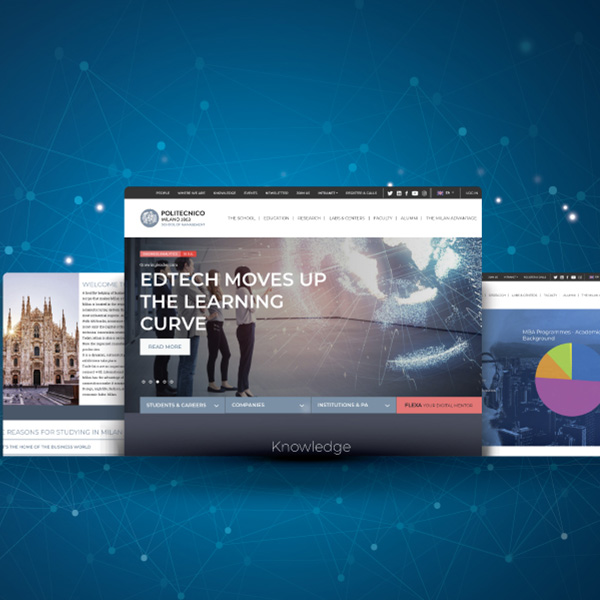
We are delighted to inform you that the new School of Management website is online.
The aim of this website is to present the School, highlighting the distinctive features of its two core structures, DIG and MIP. We will therefore be giving centre stage to both the research and training services and all the events aimed at the Community.
The site has a strong editorial line, which will help us to develop our expertise through the sharing of research content, the Faculty’s contributions and the success stories of students and alumni. We think that this represents a further step forward for the School of Management, in line with the process of integration between the School’s two souls, which has now been under way for some years. From today, our visibility on the international scene as a single entity will be even more apparent.
It is also with this idea in mind that we have decided to create a Chinese version of the site, and this will be available in a few months’ time.
Welcome to our School, welcome to our brand-new website
Alessandro Perego, Academic Director – Department of Management, Economics and Industrial Engineering
Andrea Sianesi, Dean – MIP Politecnico di Milano Graduate School of Business
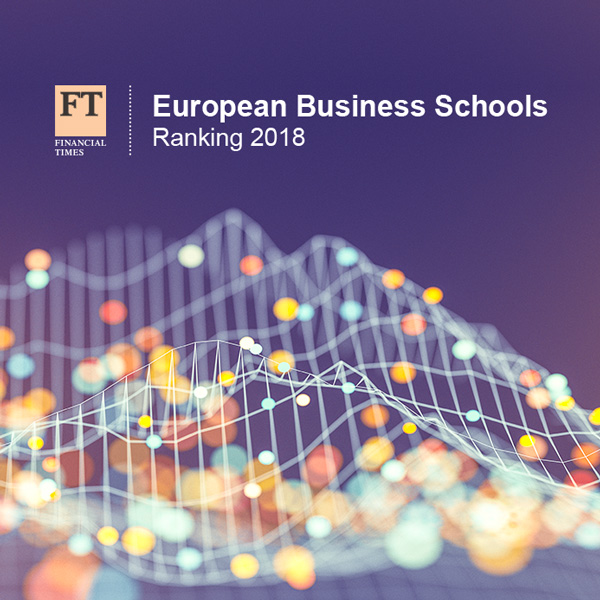
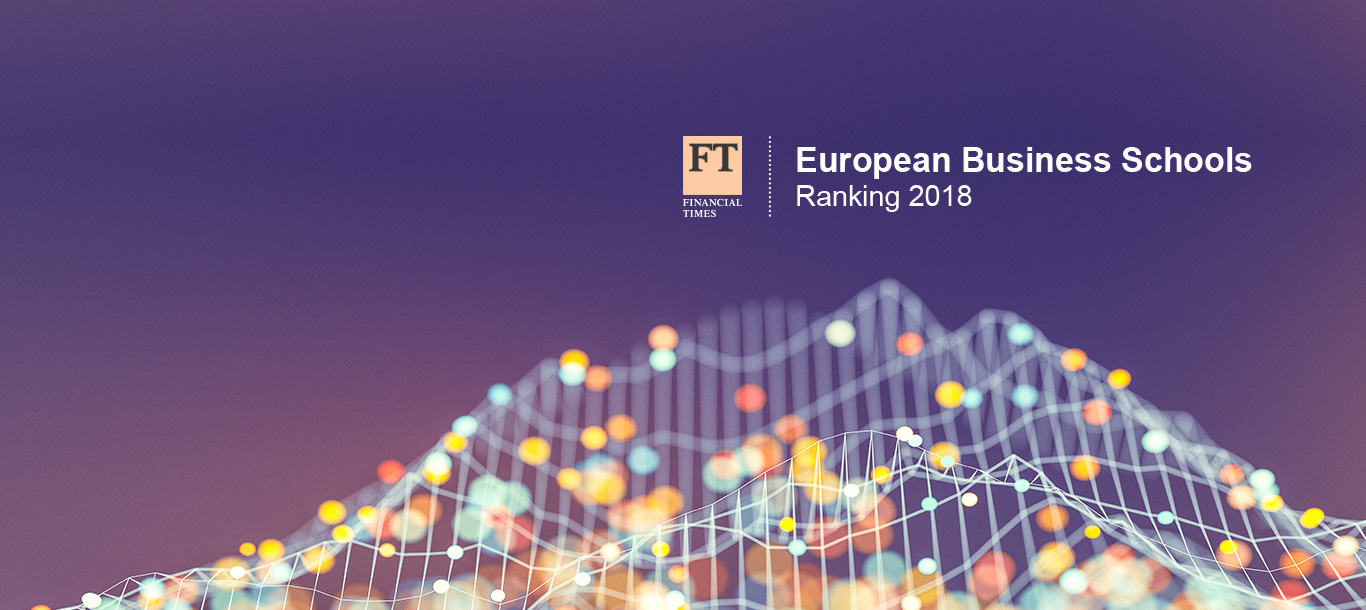
For the tenth year running, the Financial Times is re-affirming its positive assessment of Politecnico di Milano’s School of Management (SoM), which easily holds its place among the leading European business schools. This year, the School is one of the best 50 (at number 42) in the FT European ranking for 2018. As previously, the ranking examined 95 institutions of excellence, and SoM is included among the top five business schools belonging to “technical” universities with a particular focus on engineering and technology.
Politecnico di Milano’s School of Management continues to stand out in the European landscape for five product lines, ranging from the “traditional”, but by no means less in demand, Full-Time MBA and EMBA, to its Master of Science in Management Engineering and an increasingly wide and innovative offer designed for managers, professionals and companies.
Every year, the influential London-based financial paper draws up a classification of the best MBAs, Executive MBAs, Masters in Management, standard catalogue courses and customised programmes. Many parameters come into play to determine each position in the ranking, taking into account aspects such as how the graduates rate their teachers and the courses in general, their level of pay and career prospects after graduating, as well as the School’s international outlook.
Listed in the international rankings since 2009, this year the School of Management of Politecnico di Milano has cemented its place among the top flyers with wide selection of products:
SoM consists of the Department of Management Engineering and MIP, the University’s Business School. Alessandro Perego, Director of the Department of Management Engineering, and Andrea Sianesi, MIP’s Dean, expressed their positive feelings: “We are proud that FT is placing us again among the leading schools in Europe, underlining the value of our policies. This recognition is not only a reward for us but, more importantly, for our students and corporate customers, who continue to appreciate the breadth of our educational offer, its quality and innovative direction”.
They continued by saying: “Our offer is both complete and comprehensive, as reflected in our high ranking for courses and Master programmes that target executives and professionals, young graduates and companies. On top of this, the FT assessment criteria include the career perspectives for students and professionals and their excellent opinion of teachers and courses, as well as the School’s ever increasing international outlook, all aspects that are dear to us and on which we have built our offer”.
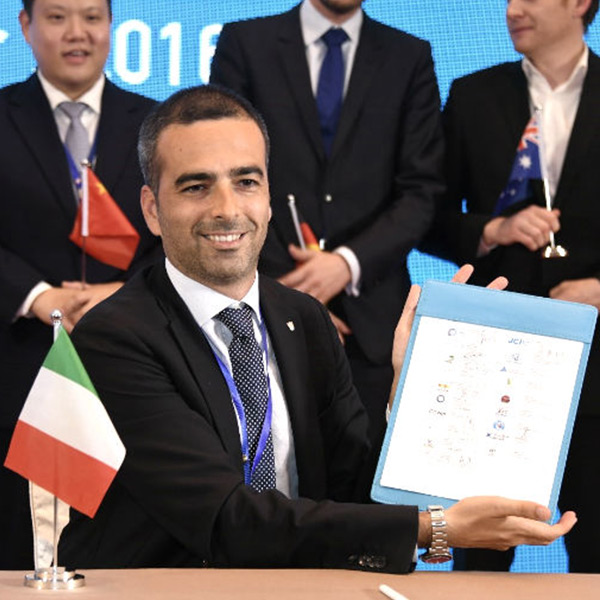
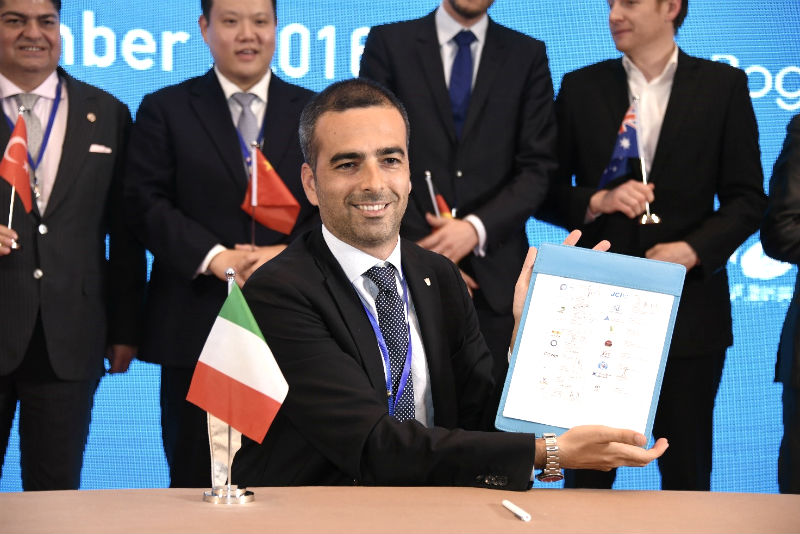
Today we are meeting Nicola Altobelli, who graduated from MIP Politecnico di Milano with an Executive MBA.
After completing his degree in Industrial Relations, Nicola started work in his family’s business, Eceplast s.r.l., and today is the company’s Commercial Director, responsible for new market development.
In May 2014, he was appointed as Sherpa for the Italian delegation of young entrepreneurs, GI Confindustria, to G20 YEA, and in July he became President of GI Confindustria Foggia.
Basically, my job is to managed contacts with our major customers across the world and, through our continuous exchange of information and experience, I try to develop new solutions that can improve our offer, to anticipate our customers’ needs and beat our competitors on time. Everything today is faster and more connected, running at an extremely rapid pace and the chance of failure very high. Even so, I do not believe that my job could be more stimulating or rewarding. More recently, I have been spending more and more time and energy on strengthening our sales force, which, without doubt, the most serious challenge any business person can face, to build up a successful team that is more than the sum of its parts.
Let’s start with the worst. In industrial packaging, the task of keeping costs in check is a key factor and can often drive even the most loyal customers to try out low-cost solutions. About four years ago, the European market was rocked by massive dumping of goods and we lost a large share of the market. We were torn between reducing our sales prices by 30% or trying to ride it out, coming up with innovative solutions, with savings for our customers in another form. I must admit, these were tough months, but this difficult period taught us to present our offer better – while opening new ways for development. As things go, today in particular, we are coming out with a revolutionary product and we hope that it will really change the market, and will allow us to scale up our business model, including on other continents. I am certainly delighted to see the surprise on the faces of my customers every time I demonstrate this new technical solution.
Leadership means knowing how to lead others towards achieving the results we set as a group and as individuals. I don’t see myself as a person with natural or charismatic leadership qualities, but I am without question full of determination, and people on the whole stay close to me, crediting me with a capacity for vision, planning and, most of all, execution. I think that this is good starting point and, all things considered, the results are mostly on my side. I have admiration for great leaders in any sector, but I also believe that their natural qualities do come into play, and these cannot be built or learnt. As for me, I only try and set a good example, with commitment and results. A simple formula, maybe a bit outdated, but I think it works.
To mark our 20th anniversary, we have recently restyled our corporate logo, so I included a new tag line: “bulk packaging innovators”. This is exactly what distinguishes our offer on the market, we are innovators in our sector and our corporate history is dotted with key moments where an innovation led to a new opportunity. Let me give you some examples. In 1995, my father was able to start his company from the family garage because of a production technology he had invented (technological innovation). When all our competitors were relocating their businesses, we invested in the development of a more automated process, increasing our services to customers instead of going down the route of lowest costs (process innovation). When our customers asked us to reduce our prices, we were able to offer products with cost benefits that did not affect our margins. Eceplast is based in the province of Foggia, the social framework is rather complicated and certainly far from the more industrialised areas, but we have always invested in people and their growth, introducing incentive systems to increase productivity (organisational innovation). Today, we are focusing on a development model based on “open innovation”, creating a community around our most innovative products.
In conclusion, as Steve Jobs said “innovation is the only way to win” and we totally agree.
I have several, but Henry Ford’s favourite maxim “If I had asked people what they wanted, they would have said faster horses” is probably best suited to this historical transition phase we are going through at Eceplast.
Our challenge is to focus on renewing our market offer through a value proposition that is not linked to the quality of our products, but to our capacity to create innovative solutions that create value for our customers. It is a challenge that excites me and I believe that we hold all the right cards and can play this game. Ford may have grasped the absence of a latent demand, producing a solution that his potential customers did not expect, one certainly more costly than a horse, but not in any way comparable. Ultimately, I would like to get our customers to see Eceplast as a partner of value and not simply a supplier of products.
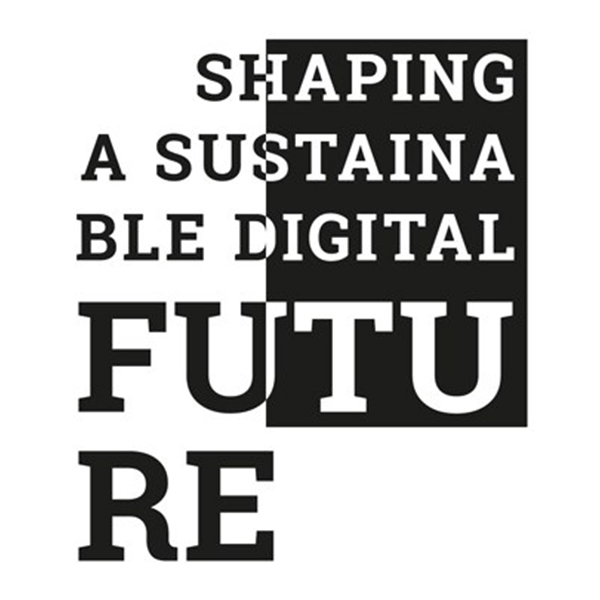
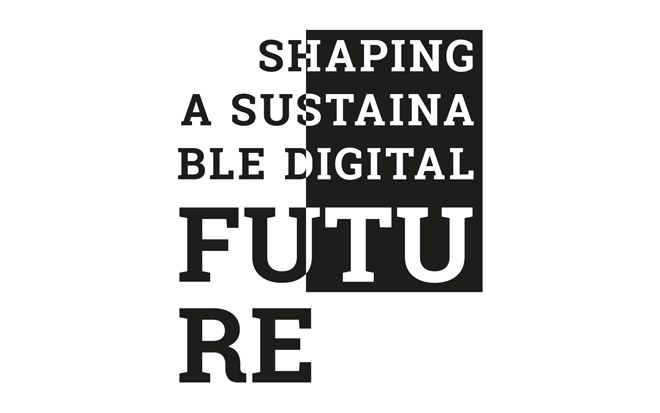
On November 20th, Fondazione Prada hosted the “Shaping a Sustainable Digital Future” Conference today as a part of a series of multi-stakeholder engagement events organized by Prada Group aiming to increase the awareness on significant societal, ecological and socio-economic changes.
“Digitalisation makes an extraordinary contribution to sustainable development – we need to take a moment to think about what that really means. That is why we are here today”.
Following an inspirational and illustrative welcome address delivered by Carlo Mazzi, Prada Chairman, the professors of Politecnico di Milano School of Management and Yale School of Management alongside business leaders and representatives of institutions as well as international organizations further elaborated how digitalization could contribute to the sustainable development, and how technology-related risks could be transformed into opportunities.
Furthermore, the event hosted Professor Nicholas Negroponte, Chairman Emeritus MIT Media Lab,
who delivered a keynote speech.
In the end, a fresh perspective on the issues was provided by the students from both Yale School of Management and Politecnico di Milano School of Management. The students also had an unique opportunity to deliver their novel contribution on stage whereby they showed how digital transformation could be used as an instrument for sustainability.
The 1st roundtable, opened by the speech held by Vittorio Grilli, Chairman of the Corporate & Investment Bank, EMEA at JP Morgan, explored a wide range of aspects at the interaction between human and technology while two themes standing out.
The first pertains to the effects of digitalization on the job market. Anil Menon, President of Cisco Smart+Connected Communities, pointed out the double nature of the issue:
“Up to 40% jobs are threatened by technology. The job proposition is now where the analytical skills come in to interpret the data. There are also opportunities to reskill people”
The second one uncovered the relationship between technology and humans articulated by the author Andrew Keen and Jon Iwata from the Yale School of Management. To illustrate,
“We always broke the future and then we recreated it – we have to demonstrate our agency if we are going to shape technology rather than allow technology to shape us”. – Andrew Keen
“Artificial Intelligence objectivity is a myth. These models are created by someone’s point of view but someone’s point of view is somebody else’s bias. We demand transparency of AI systems – but the day will come when people will need to know who trained and determines that system” – Jon Iwata
Central moment of the conference was the keynote speech held by Nicholas Negroponte, Chairman Emeritus, MIT Media Lab. He inspired the audience by covering the fascinating interplay of capitalism, entrepreneurship, democracy, education, culture, ‘groupthink’ and ways of thinking about technology.
“Capitalism is not democracy”
While during the first roundtable, participants questioned about risks and opportunities, Negroponte highlighted the importance of human factor in achieving significant implications to improve various sectors, including education and healthcare.
‘Scientists behind AI were not interested in machine learning, they were interested in children learning. How do children learn?’
The way humans elaborate and build upon technology to create creative yet digital solutions was one of the main takeaways of this speech.
Pursuing the path traced by the previous speakers, the second roundtable approached the theme of the Conference from a different perspective. What’s the role of technologies in the preservation of cultural identities of both individuals and communities?
Yale School of Management and Politecnico di Milano School of Management not only illustrated how technological innovations are threatening cultural know-how but they also proposed how to use AI to preserve, protect and deploy cultural heritage capital for sustainable development.
“Culture plays a key role in the sustainable development. AI can help us in this very complex society to understand how to deploy culture” – explains Viviane Yazdani, spokesperson of the student group for the project ‘Being’.
This project led to an enriching discussion among the speakers of the second roundtable that reflected the role of private and public sector in the creation of a sustainable society and on the importance of creating a community.
Andrea Illy, Chairman of illycaffè S.p.A said:
“We are transitioning from a systemically unsustainable society to an age where we have to shift the paradigm. Private companies have a big role in this. Culture is a huge asset to society and private companies have to help preserve it”
In the end, Elena Zambon, President of Zambon SpA remembered:
“You cannot predict, but you can invent the future. Innovation is nothing if it isn’t shared”.
After having discussed about the major changes in our societies and having analysed both technology-related risks and opportunities, the scenario taking shape was positive and promising. There is no need to be scared about technology, just be aware of its multiple nature.
At the end, Mr Mazzi, Prada Chairman, underlined that digitalisation is an opportunity for which integration across all different generations, industries and various stakeholder groups is pivotal.
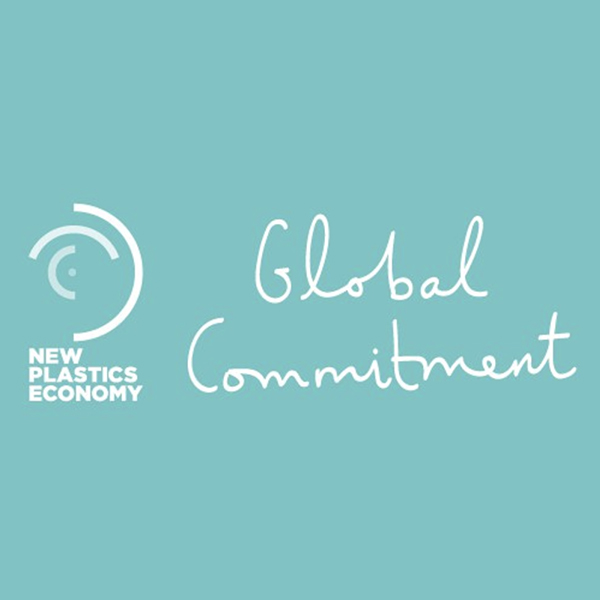
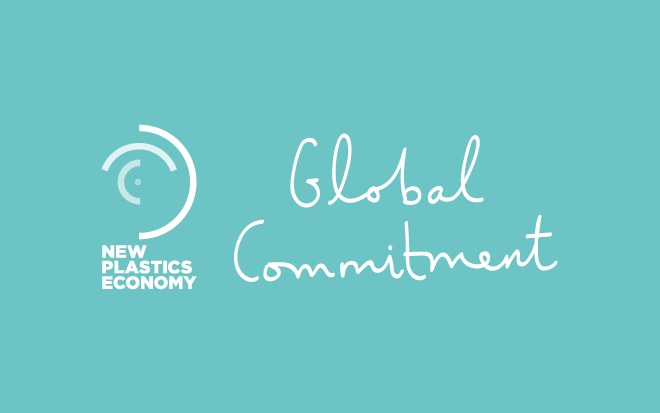
A Global Commitment to eradicate plastic waste and pollution at the source has been signed by 250 organisations including many of the world’s largest packaging producers, brands, retailers and recyclers, as well as governments and NGOs.
The New Plastics Economy Global Commitment is led by the Ellen MacArthur Foundation, in collaboration with UN Environment, and will be officially unveiled at the Our Ocean Conference in Bali today (Monday, Oct 29).
Signatories include companies representing 20% of all plastic packaging produced globally. They include well-known consumer businesses such as Danone; H&M group; L’Oréal; Mars, Incorporated; PepsiCo; The Coca-Cola Company; and Unilever; major packaging producers such as Amcor, plastics producers including Novamont, and resource management specialist Veolia.
The Global Commitment and its vision for a circular economy for plastic are supported by the World Wide Fund for Nature (WWF), and have been endorsed by the World Economic Forum, The Consumer Goods Forum (a CEO-led organisation representing some 400 retailers and manufacturers from 70 countries), and 40 universities, institutions and academics. More than fifteen financial institutions with in excess of $2.5 trillion in assets under management have also endorsed the Global Commitment and over $200 million has been pledged by five venture capital funds to create a circular economy for plastic.
The Global Commitment aims to create ‘a new normal’ for plastic packaging. Targets will be reviewed every 18 months, and become increasingly ambitious over the coming years. Businesses that sign the commitment will publish annual data on their progress to help drive momentum and ensure transparency.
Targets include:
Eliminating unnecessary and problematic plastics is an essential part of the Global Commitment vision, and will make it easier to keep remaining plastics in the economy and out of the environment.





